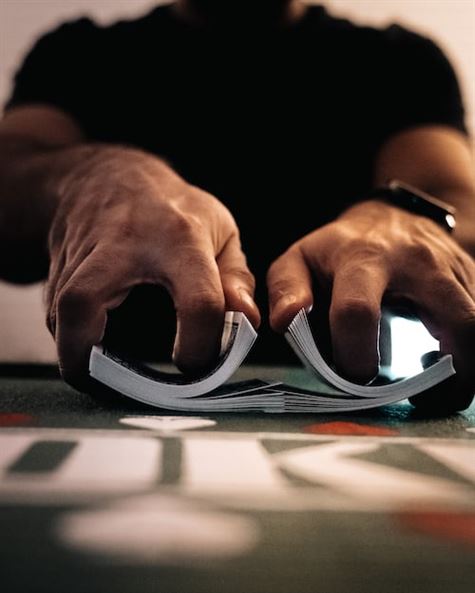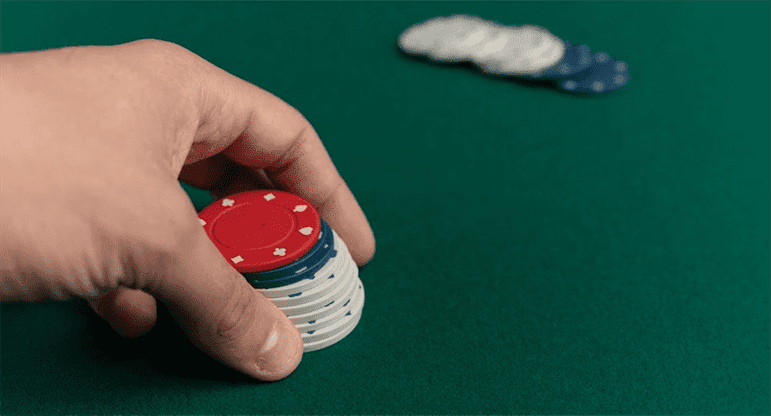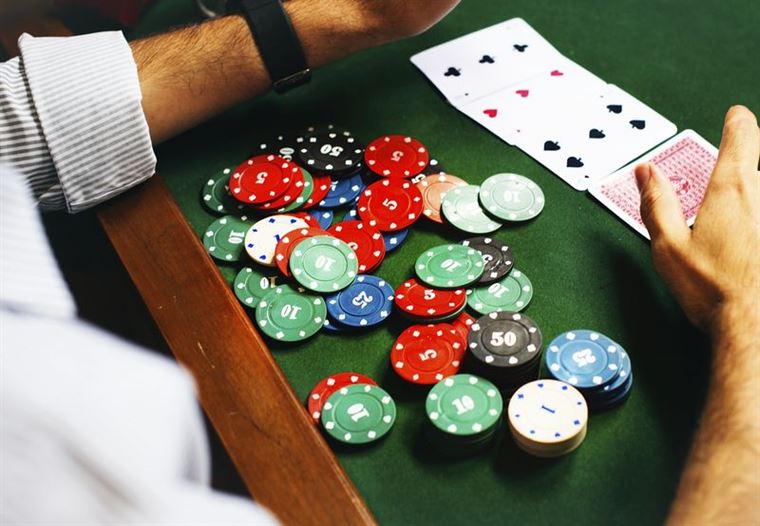Shuffling and dealing cards is a fundamental skill in various card games, whether it’s poker, blackjack, or even a casual game of Go Fish. However, many players overlook the importance of mastering proper shuffling techniques. A well-shuffled deck ensures fairness and prevents any predictability in the game. In this guide, we will explore different shuffling methods, including riffle shuffling, overhand shuffling, and the Hindu shuffle, along with tips for efficient and effective card dealing. By understanding and practicing these techniques, you can enhance your card game experience and ensure a fair and enjoyable gameplay for all.
Different Card Shuffling Techniques for a Flawless Shuffle
One of the most common shuffling techniques is the riffle shuffle. To perform this shuffle, start by dividing the deck into two equal halves. Hold one half in each hand, with your thumbs on the outer edges and your other fingers resting on the inner edges. Next, release the cards from each hand, allowing them to interweave as they fall onto the table. Repeat this process several times, alternating the halves that you release first. The riffle shuffle is not only visually appealing but also ensures a thorough mix of the cards.
Another popular shuffling technique is the overhand shuffle. This shuffle is particularly useful when you have a smaller number of cards or if you prefer a more controlled shuffle. To perform the overhand shuffle, hold the deck in one hand, with your thumb on the top edge and your other fingers on the bottom edge. Use your thumb to pull a small packet of cards from the top of the deck and transfer it to your other hand. Repeat this process, gradually transferring more cards with each iteration, until the entire deck is shuffled. The overhand shuffle may take longer than other techniques, but it allows for greater control and precision.
For those looking to add a touch of elegance to their shuffling technique, the Hindu shuffle is a perfect choice. This shuffle is often seen in magic tricks and requires a bit of practice to master. To perform the Hindu shuffle, hold the deck in one hand, with your thumb on the top edge and your other fingers on the bottom edge. Use your thumb to pull a small packet of cards from the top of the deck and transfer it to your other hand. Instead of releasing the cards onto the table, gently slide them off your thumb and onto the bottom of the deck. Repeat this process, gradually transferring more cards with each iteration, until the entire deck is shuffled. The Hindu shuffle creates a smooth and seamless flow of cards, making it a visually stunning technique.
In addition to mastering different shuffling techniques, it is equally important to develop proper dealing skills. When dealing cards, always hold the deck in one hand, with your thumb on the top edge and your other fingers on the bottom edge. Use your thumb to push the top card slightly forward, allowing it to slide off the deck and onto the table. Repeat this process for each card, ensuring that they are evenly distributed among the players. Remember to maintain a steady pace and avoid revealing the face of any card during the dealing process.
Mastering the Art of Riffle Shuffling: Step-by-Step Guide
Step 1: Preparing the Deck
Before you begin shuffling, it is crucial to ensure that the deck is in good condition. Remove any stray cards or debris, and make sure all the cards are facing the same direction. This will help prevent any bias or unfairness during the shuffling process.
Step 2: Splitting the Deck
To start the riffle shuffle, hold the deck face down in one hand. Use your other hand to split the deck into two equal halves. This can be done by placing your thumb on one side of the deck and your middle finger on the other side, gently applying pressure to create a gap between the two halves.
Step 3: Interweaving the Cards
With the deck split into two halves, it’s time to interweave the cards. Hold the two halves at the corners closest to you, with your thumbs on top and your middle and ring fingers on the bottom. Use your thumbs to lift the corners slightly, allowing the cards to interleave as you release the pressure from your fingers.
Step 4: Riffle Shuffle
Now comes the crucial part – the riffle shuffle itself. Hold the deck with your thumbs on top and your middle and ring fingers on the bottom, just as you did in the previous step. This time, apply a bit more pressure with your thumbs to create a slight bend in the cards. With a swift motion, release the pressure, allowing the cards to riffle together. The cards should cascade down and interleave with each other, creating a satisfying sound and visual effect.
Step 5: Squaring the Deck
After completing the riffle shuffle, the deck will be in a slightly disorganized state. To square the deck, hold it with one hand and use your other hand to gently push the cards together, aligning the edges. Be careful not to apply too much pressure, as you don’t want to damage the cards or bend them excessively.
Step 6: Repeat and Practice
To achieve a thorough shuffle, it is recommended to repeat the riffle shuffle several times. This will help ensure that the cards are thoroughly mixed and randomized. As with any skill, practice is key to mastering the art of riffle shuffling. The more you practice, the more comfortable and proficient you will become.
Riffle shuffling is not only an effective way to mix cards but also adds an element of flair and elegance to your card games. However, it is important to note that riffle shuffling may not be suitable for all types of cards, especially those made of delicate materials. In such cases, alternative shuffling techniques, such as the overhand shuffle, should be used to avoid damaging the cards.
Overhand Shuffle: A Simple Technique for Efficient Card Mixing
To begin, hold the deck of cards in your dominant hand with your thumb on one side and your fingers on the other. The deck should be parallel to the ground, with the cards facing down. This grip allows for better control and manipulation of the cards during the shuffle.
Next, use your non-dominant hand to pull a small packet of cards from the top of the deck. The size of the packet will depend on personal preference and the number of cards you wish to shuffle at a time. Generally, a packet of around 10 to 20 cards is recommended for a smooth and efficient shuffle.
With the packet in your non-dominant hand, use your dominant hand to pull the remaining cards from the bottom of the deck and place them on top of the packet. This action is repeated multiple times, with each repetition adding more cards to the packet. The key is to maintain a steady rhythm and fluid motion throughout the shuffle.
As you become more comfortable with the overhand shuffle, you can experiment with different variations. For example, you can vary the size of the packet or the number of repetitions to achieve different levels of randomness in the shuffle. However, it is important to note that excessive shuffling can damage the cards, so it is best to find a balance between thorough mixing and preserving the integrity of the deck.
Once you have completed the shuffle, it is time to deal the cards. Hold the deck in your dominant hand, with your thumb on one side and your fingers on the other. Use your non-dominant hand to pull a single card from the top of the deck and place it face down in front of the first player. Continue this process, dealing one card to each player in a clockwise direction, until all players have received their cards.
It is important to maintain a consistent and fair dealing technique to ensure that each player receives an equal chance of receiving any particular card. Avoid favoritism or any actions that may give away the identity of the card being dealt.
The Hindu Shuffle: Exploring an Ancient Card Shuffling Method
The Hindu Shuffle, also known as the Indian Shuffle or the Overhand Shuffle, has its roots in ancient India. It is a simple yet effective way of shuffling cards that is still widely used today. The technique involves holding the deck in one hand and using the other hand to pull small packets of cards from the top and releasing them back onto the deck. This process is repeated multiple times until the cards are sufficiently mixed.
To perform the Hindu Shuffle, start by holding the deck in your dominant hand with your thumb on one long edge and your other fingers on the opposite long edge. Your thumb should be positioned near the top of the deck, while your other fingers should be near the bottom. This grip allows for better control and manipulation of the cards.
Next, use your non-dominant hand to pull a small packet of cards from the top of the deck. The size of the packet can vary depending on personal preference, but it is generally recommended to start with around 10 to 15 cards. Hold this packet between your thumb and fingers, making sure to maintain a firm grip.
Now, release the packet back onto the deck by sliding it off your thumb and allowing it to fall onto the remaining cards. As you release the packet, use your thumb to push the top card of the deck slightly forward, creating a small gap. This gap will allow the released packet to fall cleanly onto the deck without disturbing the order of the cards below.
Repeat this process multiple times, pulling small packets from the top of the deck and releasing them back onto the deck. As you become more comfortable with the technique, you can increase the size of the packets or vary the speed at which you shuffle. The key is to maintain a smooth and fluid motion, ensuring that the cards are thoroughly mixed.
The Hindu Shuffle offers several advantages over other shuffling techniques. Firstly, it is a relatively easy method to learn, making it accessible to beginners. Additionally, it is a gentle shuffling technique that minimizes the risk of damaging the cards. This is particularly important when playing with expensive or collectible decks.
Furthermore, the Hindu Shuffle allows for greater control over the shuffling process. Unlike other techniques that involve splitting the deck into multiple piles, the Hindu Shuffle allows the shuffler to maintain a single deck throughout the process. This makes it easier to keep track of the cards and reduces the chances of errors or mistakes.
How to Shuffle and Deal Cards Like a Pro: Tips and Tricks for Perfecting Your Technique
First and foremost, it is essential to understand the different types of shuffles. The most common shuffle is the riffle shuffle, where the deck is split into two halves and then interwoven. To perform this shuffle, hold the deck in one hand and use your other hand to split it into two equal halves. Then, using your thumbs, release the cards one by one, allowing them to fall and interleave with each other. Repeat this process several times to ensure a thorough shuffle.
Another popular shuffle is the overhand shuffle. This shuffle is simpler and more casual than the riffle shuffle. To perform the overhand shuffle, hold the deck in one hand and use your other hand to take small packets of cards from the top and transfer them to the bottom of the deck. Repeat this process several times, ensuring that the cards are mixed thoroughly.
Once you have mastered the shuffling techniques, it is time to move on to dealing the cards. Proper dealing is crucial to maintain fairness and prevent any suspicion of cheating. When dealing, always start from the player on your left and proceed clockwise around the table. This ensures that each player receives an equal opportunity to receive good cards.
When dealing, it is important to maintain a consistent rhythm and speed. This not only adds to the professionalism of the game but also prevents any player from gaining an advantage by observing the cards being dealt. Practice dealing at a steady pace, ensuring that each card is delivered smoothly and without hesitation.
In addition to the mechanics of shuffling and dealing, there are a few etiquette rules to keep in mind. Always handle the cards with care, avoiding any unnecessary bending or creasing. This not only preserves the integrity of the cards but also shows respect for the game and your fellow players.
Furthermore, avoid any unnecessary conversation or distractions while shuffling and dealing. Focus on the task at hand, ensuring that each player receives their cards promptly and accurately. This not only maintains the flow of the game but also prevents any suspicion of foul play.
Lastly, always be mindful of the specific rules and variations of the game you are playing. Different card games may have different rules regarding shuffling and dealing. Familiarize yourself with these rules to ensure that you are playing the game correctly and in accordance with the established guidelines.
In conclusion, mastering the shuffle and dealing techniques is an essential skill for any card player. By understanding the different types of shuffles, practicing proper dealing techniques, and adhering to etiquette rules, you can elevate your card game to a new level of professionalism and skill. So, the next time you gather around the table for a friendly game, impress your friends with your impeccable shuffling and dealing skills.




